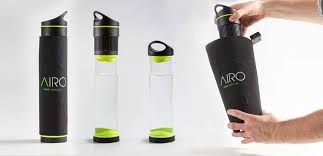
Breaking News
 UPDATE: Israel Launches Gaza Strikes, Peace Plan in Question
UPDATE: Israel Launches Gaza Strikes, Peace Plan in Question
 Gavin Newsom melts down as Pentagon plans to fire artillery shells over California highway during...
Gavin Newsom melts down as Pentagon plans to fire artillery shells over California highway during...
 The watershed moment Trump changed course on Israel after Netanyahu shattered their...
The watershed moment Trump changed course on Israel after Netanyahu shattered their...
 Brazen thieves drop priceless Eugénie crown outside the Louvre in Paris during jaw-dropping...
Brazen thieves drop priceless Eugénie crown outside the Louvre in Paris during jaw-dropping...
Top Tech News
 3D Printed Aluminum Alloy Sets Strength Record on Path to Lighter Aircraft Systems
3D Printed Aluminum Alloy Sets Strength Record on Path to Lighter Aircraft Systems
 Big Brother just got an upgrade.
Big Brother just got an upgrade.
SEMI-NEWS/SEMI-SATIRE: October 12, 2025 Edition
 Stem Cell Breakthrough for People with Parkinson's
Stem Cell Breakthrough for People with Parkinson's
 Linux Will Work For You. Time to Dump Windows 10. And Don't Bother with Windows 11
Linux Will Work For You. Time to Dump Windows 10. And Don't Bother with Windows 11
 XAI Using $18 Billion to Get 300,000 More Nvidia B200 Chips
XAI Using $18 Billion to Get 300,000 More Nvidia B200 Chips
 Immortal Monkeys? Not Quite, But Scientists Just Reversed Aging With 'Super' Stem Cells
Immortal Monkeys? Not Quite, But Scientists Just Reversed Aging With 'Super' Stem Cells
 ICE To Buy Tool That Tracks Locations Of Hundreds Of Millions Of Phones Every Day
ICE To Buy Tool That Tracks Locations Of Hundreds Of Millions Of Phones Every Day
 Yixiang 16kWh Battery For $1,920!? New Design!
Yixiang 16kWh Battery For $1,920!? New Design!
 Find a COMPATIBLE Linux Computer for $200+: Roadmap to Linux. Part 1
Find a COMPATIBLE Linux Computer for $200+: Roadmap to Linux. Part 1
This Self-Filling Water Bottle Draws Water Vapor From The Air

Sports enthusiasts, green tech entrepreneurs, and the general public will all be impressed by a novel water bottle that literally pulls water vapor out of the air to fill itself. According to GizMag, the Austrian startup Fontus is responsible for developing the innovative bottle which was a finalist for the Dyson award in 2014.
The design uses solar energy to create a condensation chamber that converts humidity extracted from the air into drinking water. When human air flows into the device, a series of hydrophobic surfaces keep dust, bugs, and debris out while causing water droplets to form.
The user is left with pure water which can be drunk on the go, during endurance sporting, or while out in the wilderness camping.
Credit: Fontus
Fontus claims that the bottle, which it plans to release in two models – the Airo and the cycling-specific Ryde – can produce 0.5 quarters (0.5 liters) in a single hour.
Thanks to the Australian government, funding was procured to continue the bottle's development. In March, the company also launched a crowdfunding project to mass produce its invention. It may not yet be on the market, but Fontus has big plans for its innovation. The company says that soon, it will release third-party white papa data that includes "reference temperature, humidity settings, duration, and resultant volume of water created."
You can watch the video above for more information.
Credit: Fontus
Credit: Fontus





